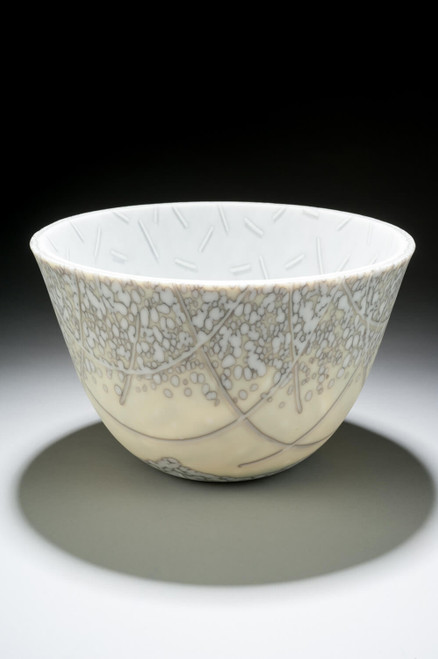The Galilean moons are the four largest moons of Jupiter. Galileo Galilei discovered these satellites orbiting Jupiter in 1610. This discovery changed the world by seriously challenging the Ptolemaic system where the Earth is considered stationary and at the center of the universe. Initially named Jupiter IV the fourth Medicean planet, the fourth satellite was later renamed “Callisto”, in Greek mythology one of the lovers of Zeus and daughter of Lycaon, King of Arcadia.
Callisto Facts:
- Third largest satellite in the solar system
- Most heavily cratered object in the solar system
- Oldest landscape in the solar system (4 billion years)
- Only body greater than 1000 km in diameter in the solar system that has shown no signs of undergoing any extensive resurfacing since impacts molded its surface.
- Twice as bright as the Earth’s Moon
- All art work is handmade by Robert Wiener in the DC Art Glass Studio. Kilnforming is a method of shaping glass in a kiln using heat and gravity. Techniques used by the artist include fusing, slumping, casting, printmaking and coldworking. It is common of kilnformed glass to have slight color shifts and small "champagne" bubbles.







